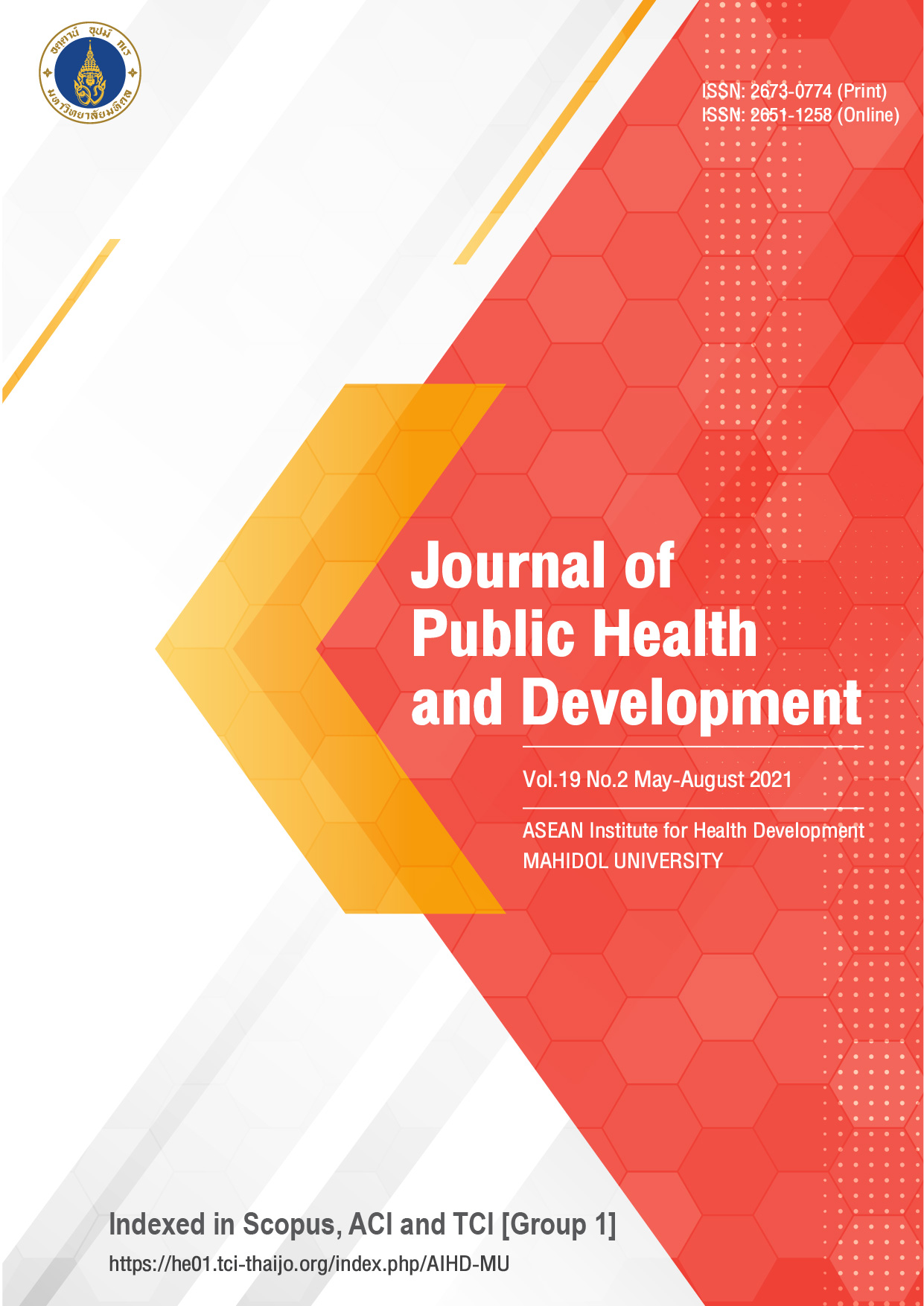Associated factors related to vaccine hesitancy and the intention to vaccinate their children among mothers
Main Article Content
Abstract
In 2019, Region IV-A CALABARZON reported the second-highest number of measles cases in the Philippines with 1,086 cases and 25 deaths. Vaccine hesitancy was identified as one of the primary causes of the increase in measles cases. This study aimed to describe the current level of vaccine hesitancy of mothers living in the province of Cavite, to determine factors associated with this hesitancy and their relationships to a mother’s intention to vaccinate their children. Data was collected from 418 respondents using a validated and reliable self-administered survey and processed using IBM SPSS V.24. Spearman’s Rho and Pearson’s R were used to measure correlations. The mothers’ vaccine knowledge (p <0.001) had moderately weak to moderately strong significant relationships to both vaccine hesitancy and intention to vaccinate. Hesitancy and intention had a moderately weak to a moderately strong significant relationship with each other (p <0.001). Educational attainment (p=0.03) and economic (p <0.001) status were less likely to influence vaccine hesitancy and intention to vaccinate as compared to the mothers’ knowledge on vaccinations. The study revealed that as vaccine hesitancy decreases, a mother’s intention to vaccinate their children increases and that as knowledge on the MMR vaccine increases, mothers were less likely to be hesitant towards the vaccination of their children.
Article Details

This work is licensed under a Creative Commons Attribution-NonCommercial-NoDerivatives 4.0 International License.
References
World Health Organization. Ten threats to global health in 2019 [Internet]. 2019 [cited 2020 April 30]. Available from: https://www.who.int/news-room/ feature-stories/ten-threats-to-global-health-in-2019
Wood, J. These are the 10 biggest global health threats of the decade [Internet]. 2020 [cited 2020 April 30]. Available from: https://www.weforum.org/ agenda/2020/02/who-healthcare-challenges-2020s-climate-conflict-epidemics/
The Lancet Infectious Diseases: Infectious disease crisis in the Philippines. Lancet Infect Dis, 19(12), 1265. Philippines. Open access 2019. doi:10.1016/s1473-3099(19)30642-5
Fatima, K., & Syed, N. I. Dengvaxia controversy: impact on vaccine hesitancy. J. Glob. Health 2018:8(2). doi:10.7189/jogh.08-020312
Kennedy, J. Vaccine Hesitancy: A Growing Concern. Pediatric Drugs. Springer Nature 2020;22: 105–111. doi:10.1007/s40272-020-00385-4
Department of Health. DOH identifies vaccine hesitancy as one of the reasons for measles outbreak [Internet]. 2019 [cited 2020 April 30]. Available from: https://doh.gov.ph/node/16721
Montemayor, M.T. Measles outbreak due to vaccine hesitancy: DOH. Philippine News Agency. Metro Manila: Department of Health 2019. [Internet]. Metro Manila: Department of Health 2019. [cited 2020 May 1]. Available from: https://www.pna.gov.ph/articles/ 061526
Icamina, P. Philippine disease outbreaks linked to vaccine fear. Metro Manila: Science Development [Internet]. 2019 [cited 2020 May 3]. Available from: https://www.scidev.net/asia-pacific/ features/philippine-disease-outbreaks-linked-to-vaccine-fear/
Massimi, A, Rosso, A., Marzuillo, C, Prencipe, G., De Soccio, P., Adamo, G., Giulia, S., Vacchio, M., De Vito, C., & Villari, P. Childhood vaccinations: Validation of a tool for measuring knowledge, attitudes, and vaccine hesitancy in pregnant women. Epidemiol Biostat Public Health 2017;14:1–5.
Larson, H.J., Jarrett, C., Schulz, W., Chaudhuri, M., Zhou, Y., Dube, E., Schuster, M., MacDonald, N., Wilson, R., & the SAGE Working Group on Vaccine Hesitancy: Measuring vaccine hesitancy: The development of a survey tool. Vaccine, 2015;33:4165-4175.
Giambi, C., Fabiani, M., D’Ancona, F., Ferrara, L., Fiacchini, D., Gallo, T., Rota, M. Parental vaccine hesitancy in Italy: Results from a national survey. Vaccine 2018;36:779–787
Matta, P., El Mouallem, R., Akel, M. et al. Parents’ knowledge, attitude and practice towards children’s vaccination in Lebanon: role of the parent-physician communication. BMC Public Health; 2020;20:1439. doi:10.1186/s12889-020-09526-3
Rosso, A., Massimi, A., De Vito, C., Adarno, G., Baccolini, V., Marzuillo, C., Vacchio, M., & Villari, P. Knowledge and attitudes on pediatric vaccinations and intention to vaccinate in a sample of pregnant women from the City of Rome. Vaccine 2019;37:1954-1963.
Olson, J.M & Maio, G.R. Attitudes in social behavior. Handbook of Psychology. Wiley Online Library 2003.
Paek, H.-J., Shin, K.-A., & Park, K. Determinants of caregivers’ vaccination intention with respect to child age group: a cross-sectional survey in South Korea. BMJ Open, 5. South Seoul. 2015.
Agarwal, A., Aditi, S., Preeti, G. & Rajesh, G. A study of vaccine hesitancy among mother and care provider during MR vaccine campaign. Natl J Community Med 2019;10:605-611.
Yufika, A., Wagner, A. L., Nawawi, Y., et al. Parents’ hesitancy towards vaccination in Indonesia: A cross-sectional study in Indonesia. Vaccine 2020;38:2592-2599.
Kim, E.Y., & Lee, M.S. Related factors of age-appropriate immunization among urban-rural children aged 24-35 months in a 2005 population based-survey in Nonsan, Korea. Yonsei Medical Journal, 52, 104-112. Seoul: Yonsei University College of Medicine; 2011.
Bertoncello, C., Ferro, A., Fonzo, M., Zanovello, S., Napoletano, G., Russo, F., Baldo, V., & Coccchio, S. Socioeconomic determinants in vaccine hesitancy and vaccine refusal in Italy. Vaccines 2020;8(276). doi:10.3390/ vaccines8020276
Yawn, B., Xia, Z., Edmonson, L., Jacobson, R, & Jacobsen, S. Barriers to immunization in a relatively affluent community. The Journal of the American Board of Family Practice [Internet]. 2002;13:325-332. Available from: https://pdfs.semanticscholar.org/ d98a/80ddac9051c9afd3dc50237047271ff0eb93.pdf
Pan, F., & Shu, H.G. Does parents' socio-economic status matter in intentions of vaccinating against human papillomavirus for adolescent daughters? Afr Health Sci 2015;15(1): 25-32.
Amadeo, K. Health care inequality in America. The Balance [Internet]. 2020 [updated 2020 Nov 2; cited 2020 Nov 5]. Available from: https://www. thebalance. com/health-care-inequality-facts-types-effect-solution-4174842
Brown, K., Kroll, J., Hudson, M., Ramsay, M., Green, J., Long, S., Vincent, C., Fraser, G., & Sevdalis, N. Factors underlying parental decisions about combination childhood vaccinations including MMR: A systematic review. Vaccines 2010; 28:4235-4248.
Cha, K.S., & Kim, K.M. The factors related to mother’s intention to vaccinate against Hepatitis A: Applying the theory of planned behavior. Child Health Nursing Research, Asian Nurs Res 2019; 25:1-8.


